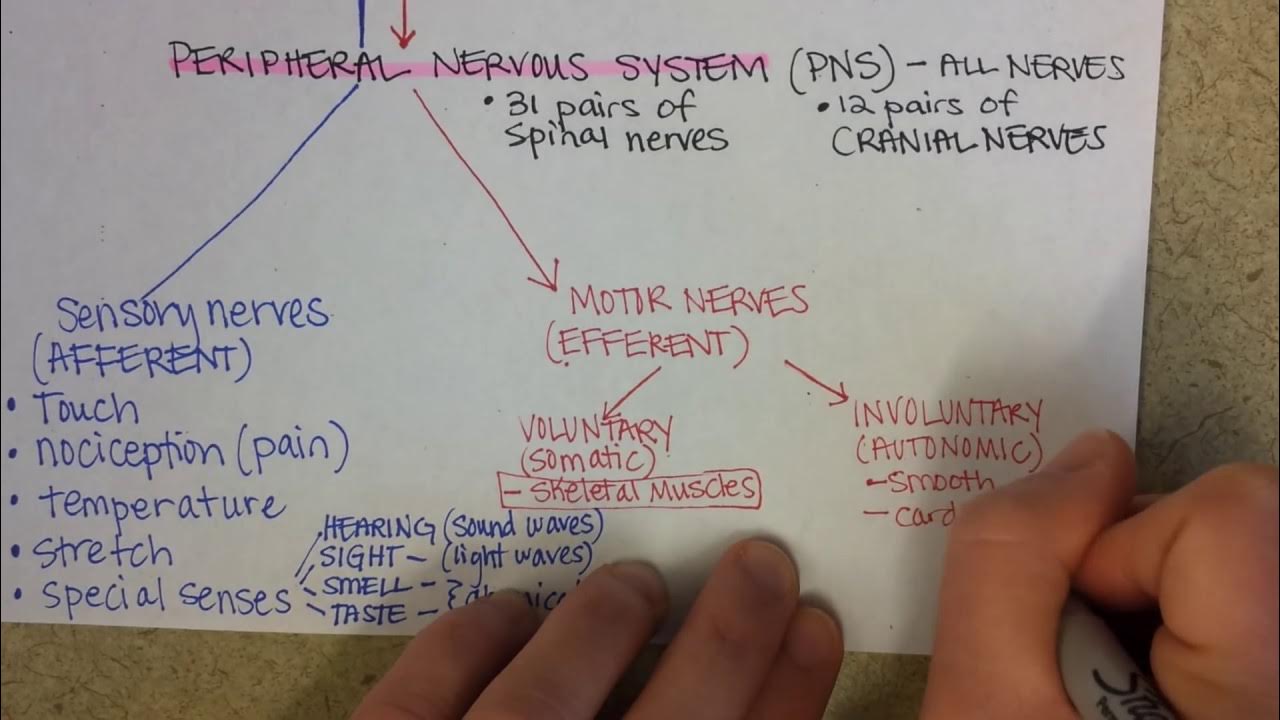Telencéfalo: Quem somos e para onde vamos
Summary
TLDRThis lecture provides an in-depth exploration of the telencephalon, a critical part of the central nervous system. The speaker, Jamary Oliveira, details the anatomy and function of various cerebral structures, including the frontal, parietal, temporal, and occipital lobes. Key topics include the sulci and gyri, such as the central and lateral sulci, as well as motor and sensory areas like the precentral and postcentral gyri. The lecture also touches on the hippocampus, language areas like Broca's and Wernicke's areas, and the limbic system, emphasizing their roles in memory, emotions, and behavior.
Takeaways
- 😀 The telencephalon is a crucial part of the central nervous system, responsible for cognitive functions such as memory, language, and communication.
- 😀 The telencephalon consists of gray matter (cortex) on the outside and white matter (fibers) in the center, with deep structures like the basal nuclei.
- 😀 The brain is divided into lobes: frontal, parietal, temporal, and occipital, each with distinct functions and roles in processing sensory and motor information.
- 😀 The central sulcus divides the motor areas (anterior) from the sensory areas (posterior) of the brain.
- 😀 The lateral sulcus is an important landmark for brain surgeons, allowing access to deeper structures while preserving the cortex.
- 😀 The primary motor cortex is located in the precentral gyrus, which controls voluntary movement, particularly through the corticospinal tract.
- 😀 Language processing is heavily linked to the frontal lobe, particularly in regions like Broca’s area, while Wernicke’s area in the temporal lobe is crucial for language comprehension.
- 😀 The parietal lobe integrates sensory information, including touch, temperature, and pain, and helps with spatial orientation and recognition of objects.
- 😀 The hippocampus is essential for memory formation, converting short-term memory into long-term memory stored in cortical areas.
- 😀 The insula, located deep in the lateral sulcus, plays a role in autonomic control, emotions, and is involved in recognizing bodily sensations such as pain and temperature.
Q & A
What is the telencephalon, and what role does it play in the human brain?
-The telencephalon is part of the central nervous system and is responsible for various cognitive functions. It plays a key role in controlling memory, language, and communication, making it essential for human behavior and interaction.
How is the telencephalon organized in terms of its structure?
-The telencephalon is composed of a cortex of gray matter and a central region of white matter. The gray matter contains neurons, while the white matter connects different brain regions. The basal nuclei are located within the white matter.
What is the central sulcus, and what is its significance?
-The central sulcus is a prominent groove that divides the motor area of the brain from the sensory areas. It helps distinguish the motor functions in the frontal lobe from the sensory functions in the parietal lobe.
What is the function of the frontal lobe, and how is it divided?
-The frontal lobe is responsible for motor functions, reasoning, and behavior. It is divided into the pre-central gyrus (motor control), and various regions including the prefrontal cortex, which governs decision-making and social behavior.
What is the significance of the Broca's area?
-Broca's area, located in the inferior frontal gyrus, is essential for speech production. It is associated with language expression, and damage to this area can lead to speech difficulties, though comprehension remains intact.
How do the parietal lobe's functions differ from those of the frontal lobe?
-The parietal lobe is primarily involved in processing sensory information, including touch, temperature, and spatial awareness. It integrates sensory input to help the brain understand the physical environment, whereas the frontal lobe is more involved in motor control and cognitive processes.
What is the role of the temporal lobe in language comprehension?
-The temporal lobe, particularly the superior temporal gyrus, plays a crucial role in language comprehension. Damage to this area can result in difficulties understanding speech, although speech production may remain unaffected.
What is the role of the hippocampus in memory?
-The hippocampus, located in the temporal lobe, is vital for memory formation. It processes new information and helps store it in different parts of the brain. It is also essential for spatial navigation and learning.
What is the function of the occipital lobe, and how does it contribute to vision?
-The occipital lobe is responsible for processing visual information. It contains the primary visual cortex, where images are interpreted, and damage to this area can lead to visual impairments, such as blindness or difficulty recognizing objects.
What is the insula, and what role does it play in the brain's function?
-The insula is a region located deep within the lateral sulcus and is involved in autonomic control, emotional processing, and self-awareness. It plays a role in regulating functions like heart rate and blood pressure, and it contributes to emotional experiences.
Outlines

This section is available to paid users only. Please upgrade to access this part.
Upgrade NowMindmap

This section is available to paid users only. Please upgrade to access this part.
Upgrade NowKeywords

This section is available to paid users only. Please upgrade to access this part.
Upgrade NowHighlights

This section is available to paid users only. Please upgrade to access this part.
Upgrade NowTranscripts

This section is available to paid users only. Please upgrade to access this part.
Upgrade Now5.0 / 5 (0 votes)





